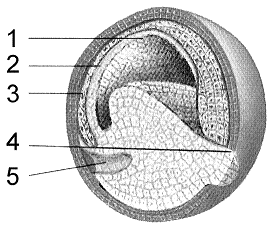According to Niko Tinbergen, Which question is least likely to be addressed by basic studies of animal behavior?
a. What is the behavior’s ecological function and how does it increase an animal’s chances of surviving and
reproducing?
b. How did the behavior evolve?
c. Which mechanisms trigger a specific behavioral response?
d. How does the expression of a behavior develop as an animal matures?
e. How will the behavior be displayed after future evolutionary processes occur?
ANSWER: e
You might also like to view...
Which of the following statements about effector cells is FALSE?
a. They are fully differentiated lymphocytes. b. They can develop from either B cells or T cells. c. They secrete immunoglobulins or interleukins depending on their origin. d. Cytotoxic T cells are effector cells e. Helper T-cells are not effector cells.
In your Ph.D. research, you use thin slices of brain tissue to study neuronal signaling. You attach an electrode to a single neuron, but cannot detect any activity. What is the most likely explanation?
A. Neurons are not electrically active; you should be recording neuroglia instead. B. Excessive myelination is blocking inputs to the cell. C. When you sliced the brain, you disconnected the cell from its dendrites. D. When you sliced the brain, you disconnected the cell from its neuroglia.
Which of the following is NOT an example of macroevolution?
A. One species of birds evolves feathers. B. One species of birds evolves into many species of birds. C. One species of dinosaurs evolves into the first mammal. D. One species of mammals evolves into a new species of mammal. E. All answers are correct.
The structure labeled 3 in Figure 51-2 is the:

a. archenteron.
b. endoderm.
c. mesoderm.
d. blastocoel.
e. ectoderm..